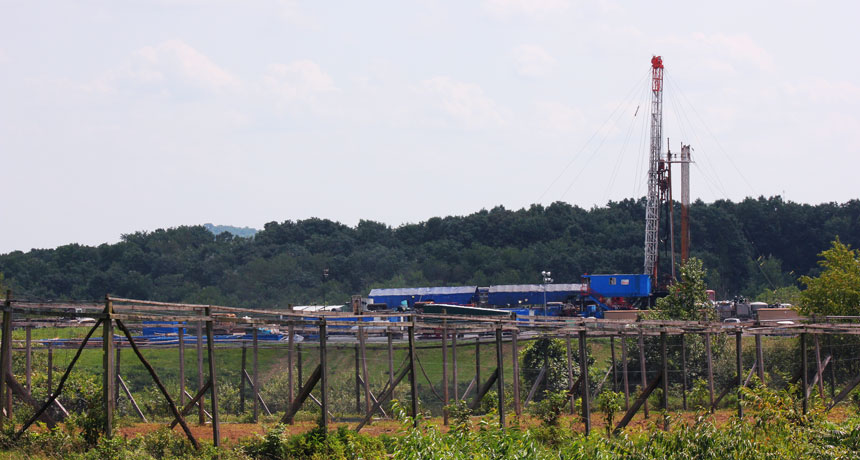25 April 2019–Small earthquakes in Ohio, Pennsylvania, West Virginia, Oklahoma and Texas can be linked to hydraulic fracturing wells in those regions, according to researchers speaking at the SSA 2019 Annual Meeting.
While relatively rare compared to earthquakes caused by wastewater disposal in oil and gas fields in the central United States, Michael Brudzinski of Miami University in Ohio and his colleagues have identified more than 600 small earthquakes (between magnitude 2.0 and 3.8) in these states.
Brudzinski said these earthquakes may be “underappreciated” compared to seismicity related to wastewater disposal since they appear to happen less frequently. He and his colleagues are studying the trends related to the likelihood of induced seismicity from hydraulic fracturing or fracking, which could help industry and state regulators better manage drilling practices.
Unconventional U.S. oil production, which extracts oil from shales and tight rocks using a variety of drilling techniques, has been linked to an increase in human-induced earthquakes across the mid-continent of the United States for nearly a decade. Researchers studying the increase in places such as Oklahoma think that the main driver of this increase in seismicity is the injection of wastewater produced by extraction back into rock layers, which increases pore pressure within rocks and can affect stress along faults in layers selected for disposal.
Hydraulic fracturing uses pressurized liquid to break apart or create cracks within a rock formation through which petroleum and natural gas can flow and be more easily extracted.
In the eastern half of Ohio and other parts of the Appalachian Basin, where there has been a dramatic rise in natural gas production over the past two decades, fracking wells are more prevalent than wastewater disposal wells, in part because the geological layers that contain oil and gas are not as wet as in places like Oklahoma, reducing the need for wastewater disposal.

The numerous fracking wells in eastern Ohio prompted Brudzinski and his colleagues to take a closer look at whether small earthquakes in the region could be connected to fracking operations. “The wells are more widely spaced when they’re active, and there isn’t as much wastewater disposal going on,” Brudzinski explained, “so you can see a bit more specifically and directly when wastewater disposal is generating seismicity and when hydraulic fracturing is generating seismicity in the Appalachian Basin.”
The scientists used a technique called multi-station template matching, which scans through hundreds of seismic signals to find those that match the “fingerprint” of known earthquakes. The technique allowed them to detect small earthquakes that might have otherwise been overlooked, and to compare the more complete earthquake catalog in a region to information on the timing and location of regional fracking well operations.
Seismologists identify earthquakes as being caused by hydraulic fracture wells when they are tightly linked in time and space to fracking operations. Fracking-related seismicity also tends to look different from seismicity caused by wastewater disposal, Brudzinski said.
“The [fracking] seismic signature when you look at it in a sort of timeline shows these bursts of seismicity, hundreds or sometimes thousands of events over a couple of days or weeks, and then it’s quiet again. You don’t tend to see that pattern with wastewater disposal,” he explained.
Brudzinski and his colleagues are now using their dataset from Oklahoma to look at how a variety of variables might affect the likelihood of fracking-induced earthquakes, from the volume and viscosity of the injected liquid to the depth of the rock layers targeted by fracking.
“The one that has stuck out to us the most is that the depth of the well is more tied to likelihood of seismicity than we expected,” Brudzinski said.
It isn’t just the deeper the well, the more likely it is to be closer to basement rock and mature faults that are likely to slip, he said, although that might still play a role in these earthquakes. Instead, overpressuring appears to have a stronger correlation with fracking-induced seismicity. Overpressuring occurs when there is high fluid pressure within rocks buried deep in a basin by many overlying rock layers. “It’s one of the strongest trends we saw,” said Brudzinski.
The researchers have discussed some of their findings with colleagues in Canada and China, where induced seismicity from fracking operations are being studied closely. “We are doing that kind of international comparison to get a better handle on the salient features and trends that aren’t just tied to a specific location,” said Brudzinski.
